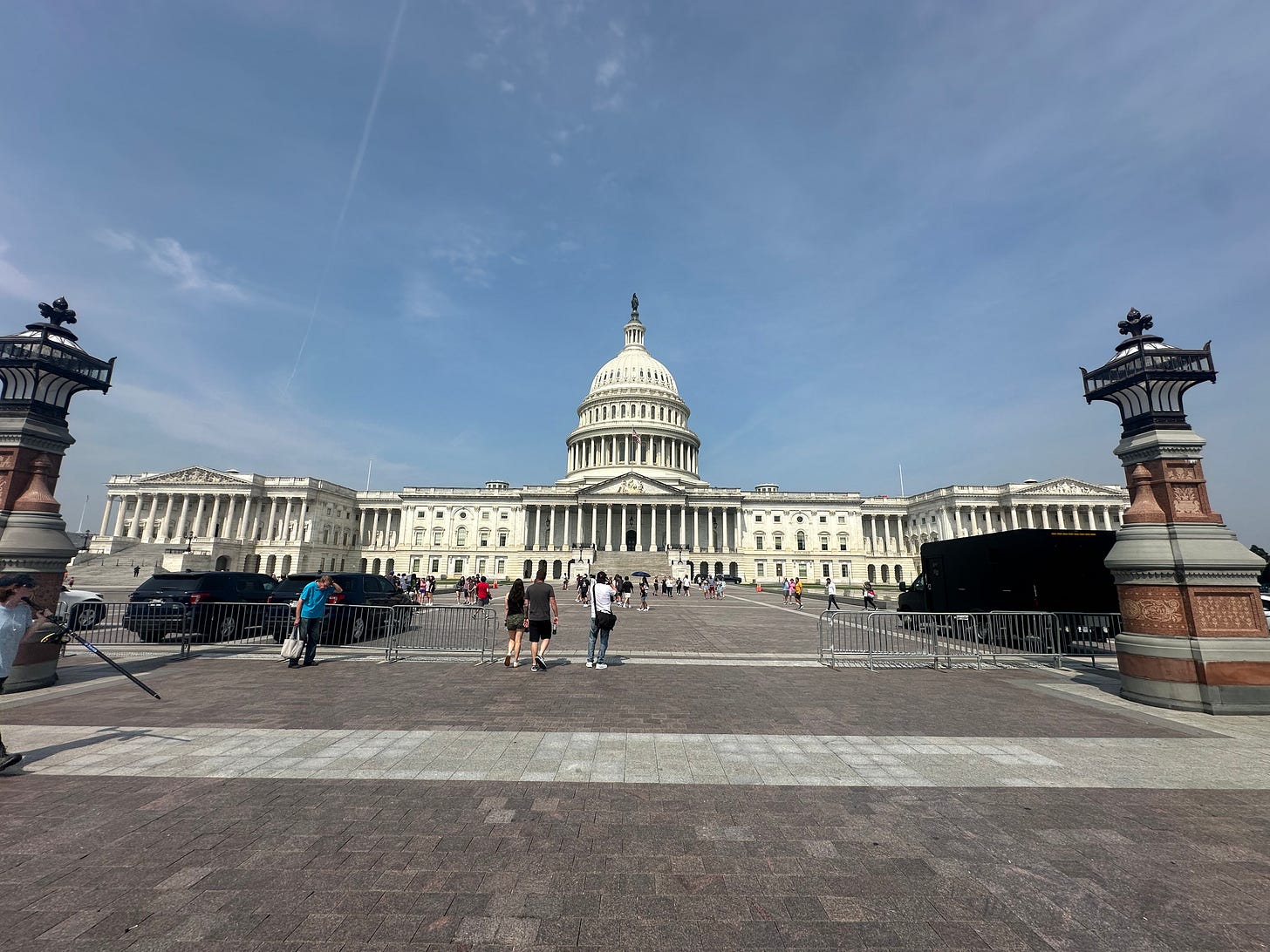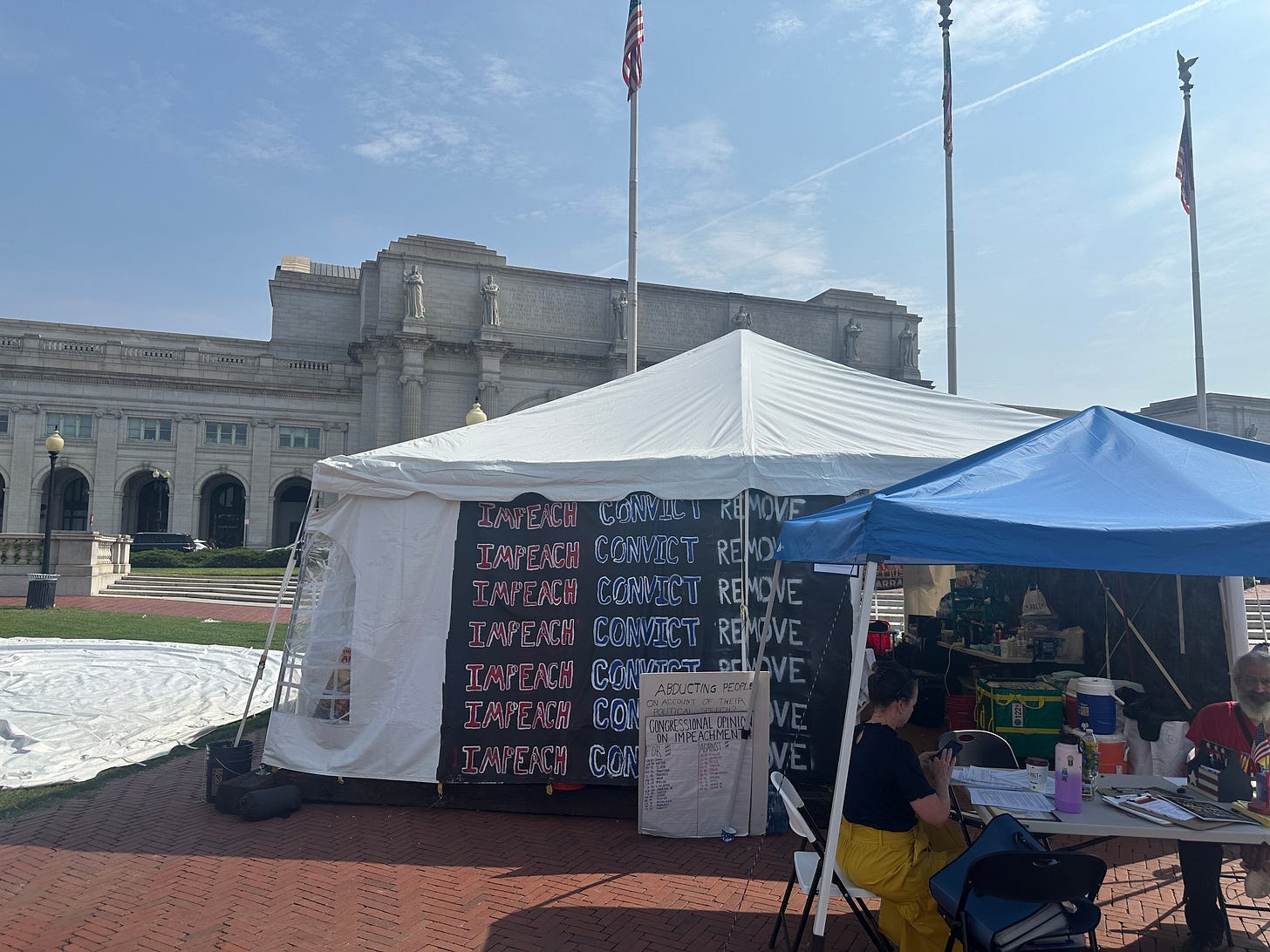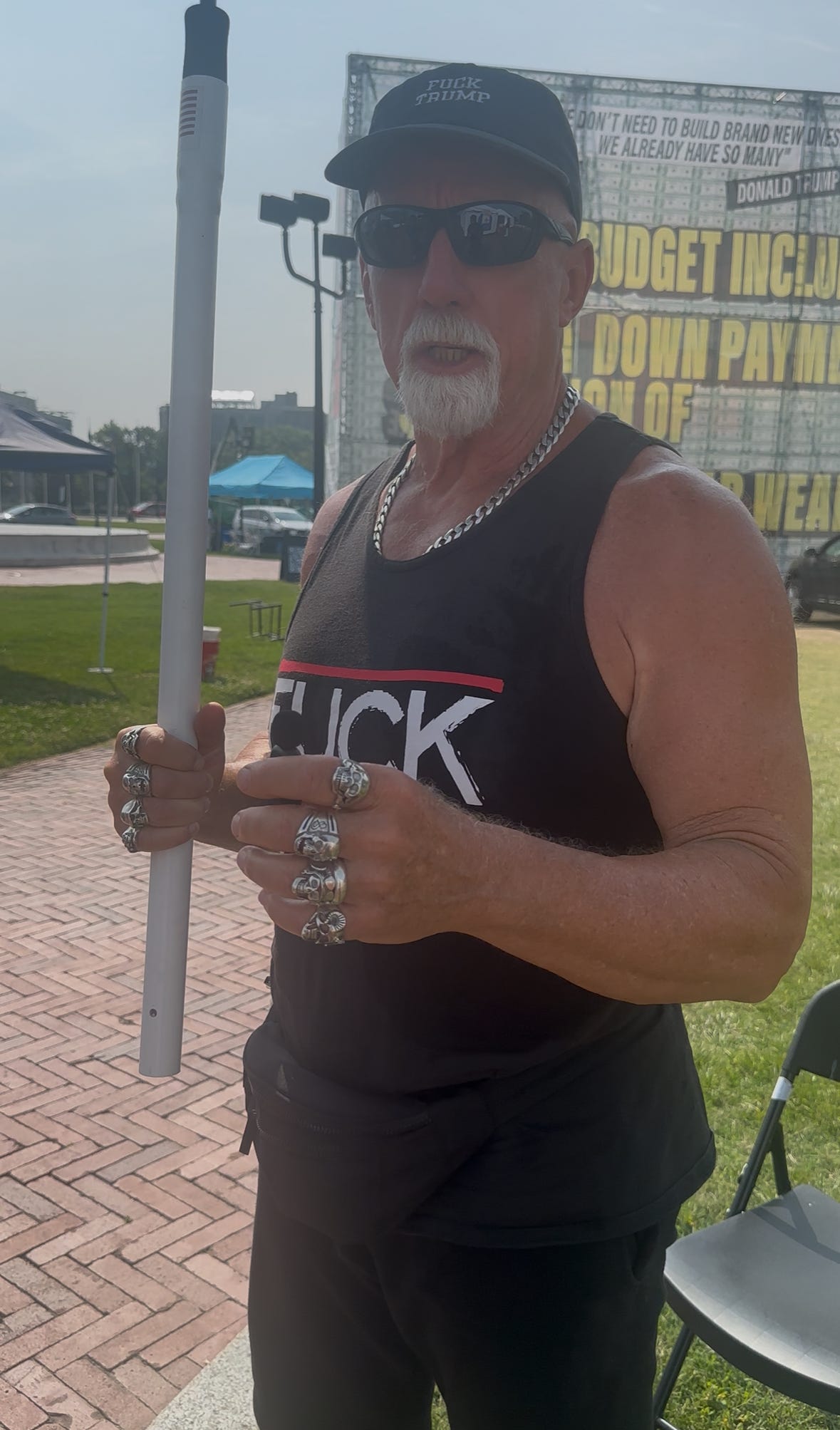How D.C. residents are responding to Trump's overhaul of their community
D.C. residents, especially veterans, are protesting changes to the federal government and their local community.
WASHINGTON D.C. — Union Station stands at the heart of the nation’s capital. From the outside, it resembles a national monument with its towering structure and grand arches, but inside, it’s a hub — where thousands of D.C. residents and visitors flow in and out of the city each day, along with the occasional pigeon that swoops in, scavenging for crumbs left behind by travelers.
Outside the station, you feel that you are in D.C. Not only because you can see the U.S. Capitol right at its entrance, but you also see protests, signs, and people organizing. One of those groups, standing in the thick, humid heat of D.C., was volunteers from May Day Movement USA, who were camped in tents, sitting on curbs, and holding handmade signs reading “impeach,” “convict, and “remove.”
On their website, the organization says they are a “grassroots coalition committed to upholding the U.S. Constitution by advocating for the impeachment and removal of President Donald Trump. Our objective is to amplify our collective voice, educate the electorate, and participate in non-violent resistance to restore democratic integrity. “ The organization began on May 1, 2025, an ode to the internationally recognized distress signal used by pilots to indicate imminent danger or a life-threatening emergency situation.
“We deliver petitions to congressmen every day to encourage them to get Trump out of power,” one of the organizers told a small group of people. “Rain, hot, cold, we are out here every day getting people to sign these petitions.”
D.C. is no stranger to these protests or organizations. From the March on Washington to the Women’s March, D.C. has always been a stage for people demanding change.
But these organizers told us sustaining these protests is a different kind of battle — one that requires not just numbers, but “endurance and resilience, especially during the Trump administration.” Organizers said the number of people joining them was depleted day by day, and law enforcement forced them to move away from the steps of the Capitol and into the heart of Union Station.
Yet, on that June 13 morning in D.C., it was veterans who led the charge of “resiliency.” The organizer’s self-defined security guard, Bruce, a veteran, told us he believed Trump was a threat to democracy and freedom, so he needed to be on the ground to “defend America.” However, noticing the shift in momentum for the organization, he said, he wished young people would show up to “fight for their rights.”
“Where are you (Gen-Z) Bruce told us, wearing 10 skeleton rings on his knuckles and a tanktop with the words “Fuck Trump.” “We need you here to fight for your country.”
Just 0.6 miles down the road is the U.S. Capitol, where it was quiet in the morning since most lawmakers and a majority of demonstrators had already cleared out ahead of the U.S. Army parade, which coincided with President Trump’s birthday.
But not everyone left.
Another veteran, Pat Shanahan, who is not affiliated with May Day, was sitting in the D.C. sun, holding up two signs condemning President Trump and calling him a “big baby president.”
And, later that day, 60 people were arrested protesting the following day’s military parade, including an 87-year-old disabled veteran.
These are the voices of D.C. that seem to be resisting an overhaul of the federal government. A city that feels the impact of national politics not from a distance, but from the front row. And with a closer look, you could see how much had changed since the Trump administration came into office, and how deeply those changes had been felt by its residents.
“D.C.’s changed a lot,” said a D.C. resident for 8 years said, who wanted to remain anonymous and will be called Ian. “I’ve been here eight years, and I’ve never seen things shift so fast. People are struggling. It’s like the hope’s just... gone.”
That loss can be measured in many ways — from Trump’s takeover of projects at the renowned Kennedy Center, to the shutdown of 21 homeless encampments, to a proposed $1.1 billion budget cut for the city, and to the layoffs and buyouts of over 275,000 federal employees and contractors. Unemployment claims in D.C. have also doubled compared to the previous year, reflecting the widespread economic strain residents are facing.
Ian was one of those workers who was laid off and facing economic uncertainty.
“I got laid off a few months ago,” Ian told us. “But thank God for Uber, that's what I have been doing while applying for other jobs. It’s been tough, but you keep your head up and move on.”
As protests and acts of resistance continue to take root across the city, many D.C. residents now see them as part of daily life. But increasingly, these demonstrations feel personal, rooted not in distant national debates, but in issues unfolding in their own neighborhoods.
"I never thought I would be protesting," one resident told us, who attended a No Kings Protest in Virginia and who wanted to remain anonymous. "You expect protests in the nation’s capital, but I never imagined national politics would hit so close to home, becoming part of our everyday people who lives here.”
All photos were taken by TUT founder Rahim Jessani






